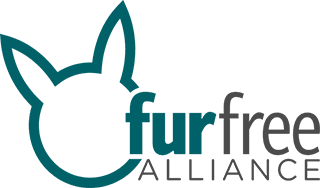Protests of rural communities against the negative impact of fur factory farms on their regions are common around the globe. Complaints by local residents centre on issues as smell, flies, noise and water pollution, disrupting rural life and lowering property values and tourism revenues.

Rural impact
Mrs. Nijole, resident of Smilgiai, a Lithuanian village with 8 fur farms within a 3 km radius, said:
‘Since the establishment of the fur farm we noticed not only the increase in the number of flies but also other pests – we’re unable to manage the mice at home (…) Our entire village has a negative opinion about the farm!”
The nearest neighbors (approx. 100 meters from the fur farm) of fur breeder Kestutis Riskus said that their house stands without selling:
‘Who would want to buy real estate in such an area?’
Canada produces around three million pelts a year, of which half come from Nova Scotia, a maritime province on the Atlantic coast. The pelts are mainly sold to China, Russia and South Korea. A governmental report in 2012 shows harmful blue-green algea blooms in nine lakes in Nova Scotia, caused by fur farm waste pollution.
Debbie Hall, a resident on Lake Fanning in Nova Scotia, said:
“We used to think of the classic cliché of fun at the lake, running and jumping off the dock. Now there are massive blooms from late May until November and when they die off, the bacterial decomposition uses up all the oxygen and we end up with huge dead zones.”
Colleen McGill, a Nova Scotian resident protesting building plans of a mink factory farm in her street, said:
“We want to ensure that neighbouring property owners don’t lose the use of their land or their quality of life through odours and flies.”
Citizens' protest

Between 2012 and 2017, 141 protests of local residents against fur farms were reported in Poland, world’s third largest producer of fur pelts.
Since the emergence of intensive fur factory farms in the Polish rural district of Gmina Zorowina, local residents are publicly speaking out against the negative impact of the farms on local communities. Maciej Zatonski, a local resident of Wegry, was appalled to find out about the large-scale mink breeding facility built near his village by the Dutch-Polish breeder Farm Equipment International, a company controversial for violating environmental regulations in Poland:
“The sickening stench is detectable as far as several kilometres away from the fur farm.”
Local residents
Recent
The attitudes of local residents towards fur farms in Poland
Independant study by ZOBSiE, Polish center for Social and Economic research. Commisioned by Open Cages, Fur Free Alliance and the Albert Schweitzer Foundation

